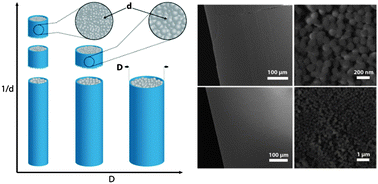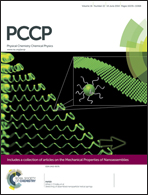Synthesis and mechanical response of disordered colloidal micropillars†
Abstract
We present a new approach for studying the uniaxial compressive behavior of colloidal micropillars as a function of the initial defect population, pillar and colloid dimension, and particle–particle interaction. Pillars composed of nanometer scale particles develop cracks during drying, while pillars composed of micron scale particles dry crack-free. We subject the free-standing pillars, with diameters of 580 μm and 900 μm, to uniaxial compression experiments using a custom-built micromechanical testing apparatus. In pillars with pre-existing cracks, compression activates the macroscopic defects, leading to fracture and stochastic mechanical response as a result of the flaw distribution. Pillars that dry crack-free fail by shear bands that initiate near the punch face. While macroscopically identical, pillar-to-pillar mechanical response varies significantly. We attribute the disparate response to varying structure and environmental conditions. To isolate the effects of environment, we performed controlled experiments over a range of relative humidity levels (<2% to >98% RH). The level of atmospheric humidity affects particle–particle cohesion and friction, resulting in dramatically different mechanical responses. We discuss the results in the context of underlying particle rearrangements leading to mesoscopic shear localization and examine comparisons with atomic disordered systems such as metallic glasses.

- This article is part of the themed collection: Mechanical properties of nanoassemblies

 Please wait while we load your content...
Please wait while we load your content...